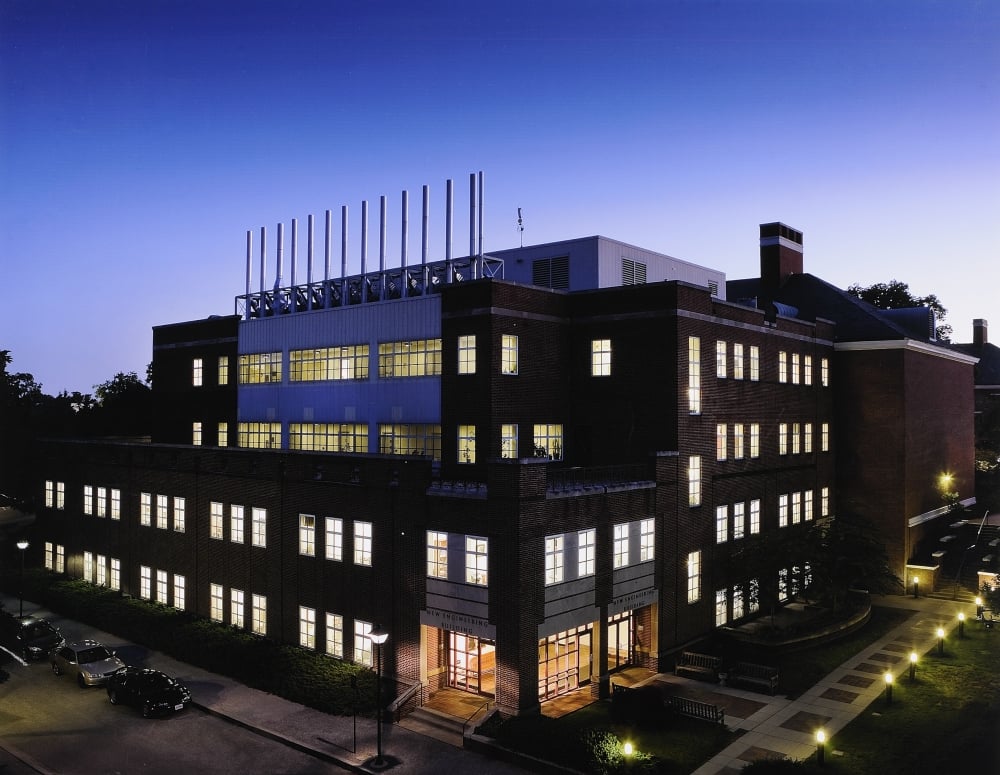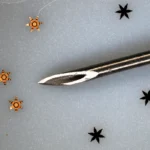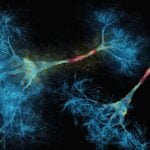Happy 14 Year Anniversary to the INBT

In 2006, the verb “to google” enters the Oxford English dictionary, Google purchased YouTube, Twitter is launched, and Pluto is reclassified from a planet to a dwarf planet. What also happened in 2006? The Johns Hopkins Institute for NanoBioTechnology (INBT) opened its doors.
The INBT was initially established with $6 million in start-up funding from the National Science Foundation, the Howard Hughes Medical Institute, NASA, and Johns Hopkins University. The institute was also fortunate to have then U.S. Sen. Barbara Mikulski, D-Md., secure some of the startup funding and express her support for the facility.
Co-founders Peter Searson and Denis Wirtz had a vision when they opened the INBT. They wanted a collaborative institute for cross-disciplinary research that merged engineering, medicine, biology, and public health to improve human and environmental health. By focusing on small scale science, they endeavored to create less invasive diagnostic tools, nanostructures compatible with living tissues, the ability to track and monitor proteins and enzymes in real time, and uncover new knowledge, to name a few.
The co-founders brought in faculty from the Whiting School of Engineering, School of Medicine, Krieger School of Arts and Sciences, School of Public Health, and now includes the Applied Physics Lab. These faculty work at many research levels, from basic science to bringing research into the marketplace.
Searson is a core faculty member at the INBT and Joseph R. and Lynn C. Reynolds Professor of Materials Science and Engineering, and Wirtz is a core faculty member at INBT, Vice Provost for Research, and Theophilus Halley Smoot Professor in the Department of Chemical and Biomolecular Engineering.
A few years later in October 2009, the INBT was awarded a grant by the National Cancer Institute (NCI) to be one of 12 facilities for their Physical Sciences Oncology Centers. Then directors were Denis Wirtz and Gregg Semenza, director of the vascular program at the Johns Hopkins Institute for Cell Engineering, professor of Genetic Medicine, and 2019 Nobel Prize in Physiology or Medicine. The facility is a collaboration of Hopkins researchers and researchers from University of Arizona, Washington University School of Medicine, and University of Pennsylvania Abramson Cancer Center.
Their purpose is to study how the physical sciences contribute to cancer metastasis. The researchers have taken a different approach to study tumor growth and metastasis by observing how physical cues, such as mechanical properties, force, pressure, etc. influence cell behavior. Since the initial award, the NCI has renewed the INBT’s grant to continue their hard work, and it is still directed by Denis Wirtz, but now includes co-director Kenneth Pienta, director of research at The James Buchanan Brady Urological Institute and professor of urology.
Research was not the only main focus of the INBT. Creating education and translational initiatives were equally important.
Translation initiatives were developed to move work in the laboratory into the marketplace. To assist with those initiatives Tom Fekete, a chemical engineer who spent his career in the commercial sector, was hired. Tom was with the institute as the Director of Corporate Partnerships for 10 years before he retired in July 2018. He helped to bridge the gap between academia and industry by creating different programs for research cooperation between the two areas, and to help faculty even start their own companies.
Not only that, Fekete helped to establish educational programs for students such as the Master’s Cooperative Education program, where students spend six months working in with an industry partner all while earning a salary and college credit.
Education initiatives helped to train the next generation of scientists and engineers. With support from the National Science Foundation, the INBT received funding for the Nanotechnology for Biology and Bioengineering Research Experience for Undergraduates (REU) program and the International Research Experience for Students (IRES) program. The REU program is still ongoing and has been supported for the past 11 years. In that time, the INBT has hosted 155 students with 52% of the students identifying as women and 49% identifying as underrepresented minorities.
The INBT continues to support students in other education programs and events such as seminars, the annual Nano-Bio Symposium, the undergraduate symposium, and social gatherings.
The INBT has grown to be a community of faculty, students, and staff that supports the institute in all its endeavors, which has allowed the institute to thrive for 14 years. Searson and Wirtz handed over the reins to new directors, Sharon Gerecht, the Kent Gordon Croft Investment Management Faculty Scholar and professor in the Department of Chemical and Biomolecular Engineering, and Hai-Quan Mao and professor in the Department of Materials Sciences and Engineering, in early 2017. With their leadership and the community’s collaborative spirit and dedication, the INBT is prepared for another decade of success.
Latest Posts
-
 Johns Hopkins Postdoc Named in Forbes `30 Under 30′ List
December 8, 2025
Johns Hopkins Postdoc Named in Forbes `30 Under 30′ List
December 8, 2025
-
 Micro Grippers: David Gracias Builds Micromachines That Fold, Stick, Swim, and Sense—All Inside the Human Body.
November 20, 2025
Micro Grippers: David Gracias Builds Micromachines That Fold, Stick, Swim, and Sense—All Inside the Human Body.
November 20, 2025
-
 A bold new approach to autoimmune diseases
November 19, 2025
A bold new approach to autoimmune diseases
November 19, 2025


